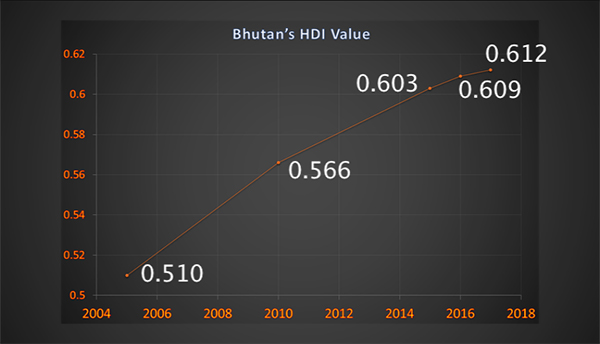 Bhutan is ranked 134 out of 189 countries in the latest Human Development Index (HDI) released by the United Nations Development Programme (UNDP).
Bhutan is ranked 134 out of 189 countries in the latest Human Development Index (HDI) released by the United Nations Development Programme (UNDP).
Bhutan’s 2017 HDI of 0.612 as compared to 0.510 in 2005 shows the country saw an increased life expectancy, students stay in school for longer years, and an increased per capita income.
Since 2005, Bhutan’s life expectancy at birth increased from 64.9 years to 70.6 years in 2017. The expected number of years of schooling also increased by almost two folds in the same period.
On the economic front, the gross national income per capita now stands at over US$ 8000 as compared to just over US$ 4000 in 2005.
However, gender-based inequalities in economic activities and empowerment areas still persist in the country, hampering the overall Human Development Index.
Poor women representation in the parliament, most women not attaining secondary education, and fewer women participating in the labour force indicate wide gender-based inequalities.
Compared to 29.6 per cent female representation in the parliament in Nepal, Bhutan only has 8.3 per cent, while the average in the South Asia region is 17.5 per cent.
Only six per cent of women in Bhutan have at least secondary education as compared to 13.7 per cent men in Bhutan. On the contrary, Nepal has 27.3 cent women least have secondary education.
Female participation in the labour force in Bhutan stands at 58 per cent, almost 25 per cent lower than male participation. Thus, in the Gender Inequality Index (GII), Bhutan ranks 117 out of 160 countries.










